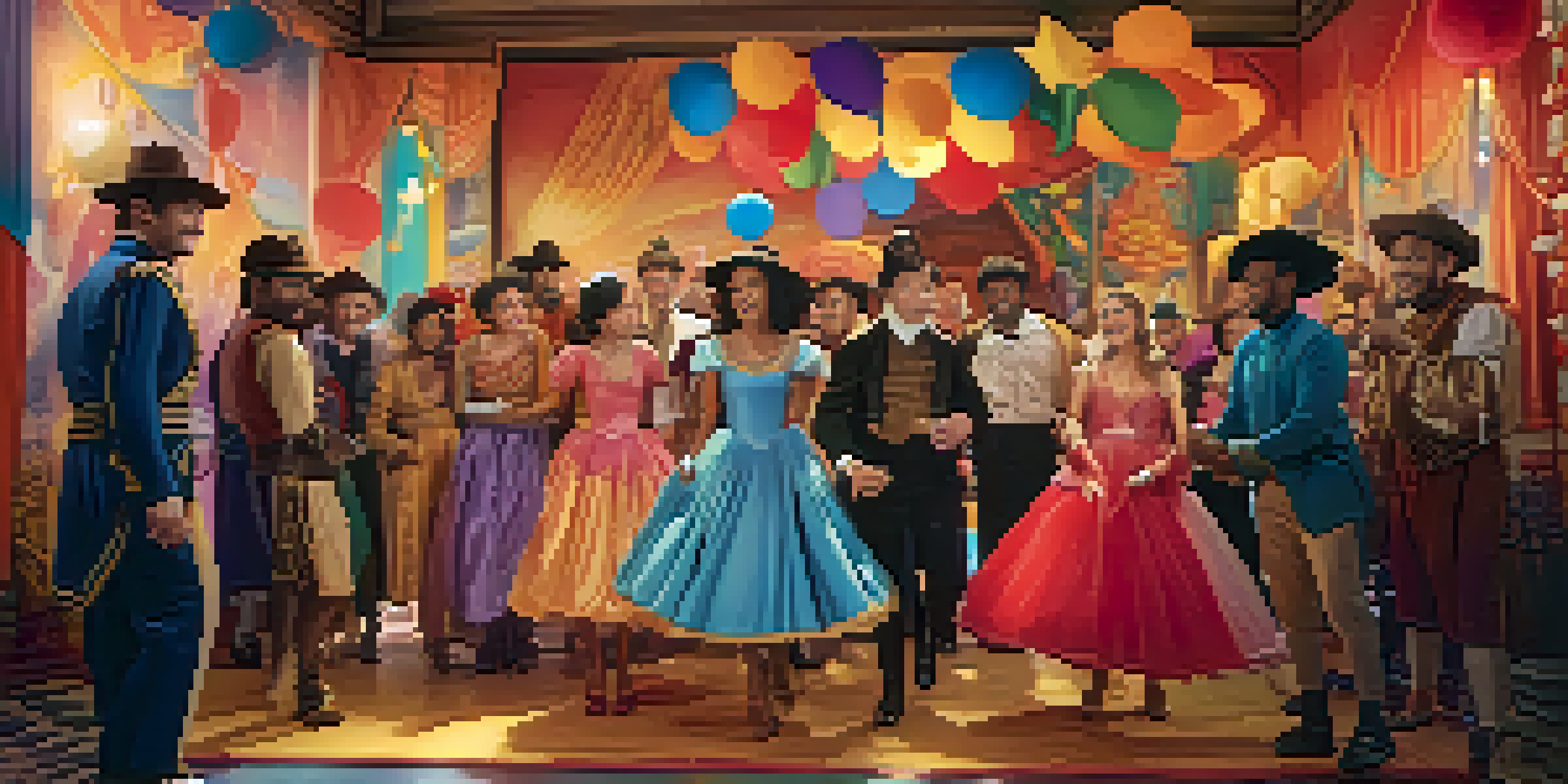Inclusive Casting: The Shift Towards Authentic Representation

Understanding Inclusive Casting and Its Importance
Inclusive casting refers to the practice of selecting actors who authentically represent the characters they portray. This means considering factors such as race, gender identity, ability, and cultural background. The goal is to create a more accurate reflection of society, enhancing the storytelling experience for audiences.
Diversity is being invited to the party; inclusion is being asked to dance.
Historically, many productions have cast actors who do not represent the demographics of their characters, leading to a disconnect between the story and its audience. Inclusive casting challenges this norm, urging creators to think critically about who tells a story and how those perspectives shape narratives. It’s not just about diversity for diversity’s sake; it’s about authenticity and respect.
As audiences become more aware and vocal about representation, the demand for inclusive casting has intensified. This shift is not merely a trend; it's a significant movement towards equity in the entertainment industry. Ultimately, embracing inclusive casting enriches the art form and resonates deeply with viewers.
The Impact of Authentic Representation on Audiences
When audiences see characters who genuinely reflect their experiences, it fosters a sense of belonging and validation. For example, a young person from a marginalized community may feel empowered when they see a character that looks like them overcoming challenges. This kind of representation can significantly impact self-esteem and identity.

Moreover, authentic representation allows stories to be told more richly and accurately. When actors embody roles that reflect their lived experiences, their performances are often more nuanced and relatable. This authenticity can lead to more profound emotional connections between the audience and the narrative.
Authentic Representation Matters
Inclusive casting fosters a sense of belonging and validation for audiences by reflecting their experiences authentically.
As viewers increasingly seek out content that resonates with their realities, the industry faces pressure to adapt. This push for authentic representation not only benefits underrepresented communities but also enriches the viewing experience for everyone. After all, stories resonate more when they are rooted in genuine experiences.
Challenges in Achieving Inclusive Casting
Despite the growing demand for inclusive casting, significant challenges remain. One major hurdle is the entrenched biases within casting processes and decision-making roles. Many casting directors and producers may unconsciously favor familiar faces or traditional narratives that don’t reflect the diversity of society.
You can't be what you can't see.
Another issue is the limited number of roles available for underrepresented groups. Even when inclusive casting is prioritized, the overall pipeline of diverse stories is still lacking. This gap can lead to tokenism, where diverse actors are cast without meaningful roles, undermining the goal of authentic representation.
Additionally, the industry often struggles with balancing commercial viability and the desire for inclusivity. Production companies may hesitate to take risks on diverse stories due to fears about profitability. However, as audiences continue to demand more representation, it's becoming increasingly clear that inclusive casting is not just ethically right; it’s also financially savvy.
The Role of Audiences in Promoting Inclusivity
Audiences play a crucial role in driving the shift towards inclusive casting. By supporting films and shows that prioritize authentic representation, viewers send a clear message to the industry about their preferences. Ratings, reviews, and social media conversations all influence what gets made and how stories are told.
Moreover, audiences can become advocates for change by voicing their opinions. Engaging in discussions about representation and holding media accountable can create a ripple effect. When viewers call out productions for lack of diversity, it encourages creators to reconsider their approach and strive for inclusivity.
Challenges in Inclusive Casting
Despite the rising demand for inclusive casting, biases and limited roles for underrepresented groups remain significant obstacles.
In essence, the power of the audience is immense. By choosing to support inclusive content and speaking out against exclusionary practices, viewers can help foster an environment where authentic representation is the norm, not the exception.
Case Studies of Successful Inclusive Casting
Several recent productions illustrate the positive impact of inclusive casting. For instance, the critically acclaimed series 'Pose' features a predominantly transgender cast, telling stories that reflect their realities. This groundbreaking show not only garnered critical praise but also opened doors for more diverse narratives in mainstream media.
Another notable example is the film 'Black Panther,' which celebrated African culture and featured a predominantly Black cast. The film's success demonstrated that audiences crave authentic stories that resonate with their experiences, regardless of the characters' backgrounds. It broke box office records while providing representation that was both meaningful and empowering.
These case studies highlight that inclusive casting can lead to both artistic success and cultural impact. When productions commit to authenticity, they create space for stories that resonate deeply with audiences, proving that representation matters.
The Future of Inclusive Casting in Entertainment
As the conversation around inclusive casting continues to evolve, the future looks promising. Many industry leaders are recognizing the importance of diverse storytelling and are actively seeking to include underrepresented voices. This shift not only reflects societal changes but also aligns with the demands of a more aware audience.
Moreover, as technology advances, new platforms are emerging that allow for a wider range of stories to be told. Streaming services, in particular, have become hotbeds for diverse content, offering a variety of narratives that reflect the complexities of the modern world. This democratization of media means that more voices can be heard, leading to richer storytelling.
Audiences Drive Change
Viewers play a crucial role in promoting inclusivity by supporting diverse content and advocating for authentic representation.
Ultimately, the future of inclusive casting hinges on sustained commitment from all stakeholders—creators, audiences, and industry leaders alike. By continuing to advocate for authentic representation, we can collectively shape a media landscape that celebrates diversity and inclusivity.
Conclusion: Embracing the Change Towards Inclusivity
The shift towards inclusive casting reflects a broader societal movement towards equity and representation. As we embrace this change, it’s essential to recognize the impact that authentic stories can have on individuals and communities. By promoting diverse narratives, we enrich the cultural tapestry of our society.
While challenges remain, the growing awareness around the importance of inclusivity in casting is encouraging. As audiences become more engaged and vocal, the industry is compelled to evolve. This collective effort can lead to a more vibrant and representative media landscape.

In conclusion, inclusive casting is not just a trend; it's a necessary evolution in storytelling. By continuing to advocate for authenticity and representation, we can ensure that future generations see themselves reflected in the stories that shape our world.